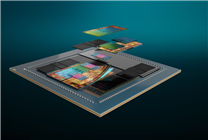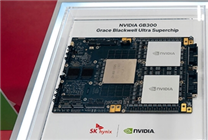AMD and NVIDIA: Navigating U.S. Export Regulations and Their Impact on AI Graphics Cards in China
Summary
- The U.S. has lifted its export ban on AMD and NVIDIA for AI graphics cards to China, under the condition of a 15% revenue payment.
- Both companies face uncertainties regarding the sale of their graphics cards in China, especially the MI308 model and H20 series.
- AMD is assessing options for domestic sales while attempting to manage inventory losses due to previous restrictions.
The landscape of AI graphics cards is undergoing significant shifts as the United States recently amended its export restrictions on leading technology companies such as AMD and NVIDIA. This pivotal moment follows a ban initiated in April that prevented these companies from selling their advanced graphics cards to the Chinese market, including specialized models such as the H20 and MI308.
In July, after a round of negotiations, the U.S. government announced it would allow sales to resume, albeit with a stipulation: both AMD and NVIDIA must pay 15% of their revenue back to the U.S. This move sets a precedent in the tech industry, particularly regarding export licenses and their associated financial ramifications.
Current Challenges and Market Outlook
Nonetheless, resuming exports does not signal a straightforward path to success for either company. Sales of the H20 series in China remain under scrutiny. The U.S. export licenses introduce further complications, while concerns over security vulnerabilities plague the domestic market. This precarious situation places NVIDIA and AMD in a challenging position, requiring strategic navigation through regulatory landscapes and market pressures.
AMD, in particular, has encountered significant hurdles due to the previously imposed ban. The company faced an estimated loss of $800 million in unsold MI308 inventory. With the ban now lifted, AMD’s priority is clear: to expedite the resumption of exports. The MI308 model has limited market potential outside of China, compounding the urgency of clearing existing inventory.
Strategic Reassessments
In a recent statement, AMD’s Chief Financial Officer, Jean Hu, highlighted the company’s ongoing evaluation about enabling domestic customers to procure MI308 graphics cards directly from the U.S. This consideration signals a commitment to recovering from past losses without introducing new MI308 production until existing stock is managed.
Moreover, the launch of next-generation AI graphics cards hinges significantly on the ability to obtain the necessary export licenses. This uncertainty casts a shadow over AMD and NVIDIA’s future operations in the Chinese market. If these licenses are not secured, the sales trajectory for both companies will be severely impacted, leaving them with no choice but to halt production of the critical H20 and MI308 graphics cards.
Final Thoughts
The ramifications of the U.S. export restrictions are profound, and both AMD and NVIDIA are at a crossroads. Their primary focus is on reconciling past inventory losses while navigating a complex regulatory environment. Without clarity on licensing processes or commitments from the U.S. government, the future of AI graphics card sales in China remains uncertain.
As the tech industry evolves, the interplay between government regulations and market dynamics will undoubtedly shape the strategies of these leading companies. Both AMD and NVIDIA must adapt to the changing landscape to not only survive but thrive in an increasingly competitive global market for AI technologies.
The upcoming months will be critical for these companies as they strive to meet the demands of their customers while complying with heightened governmental scrutiny. The outcome of their strategic decisions will set the tone for the future of AI graphics technology and its market presence in China.







